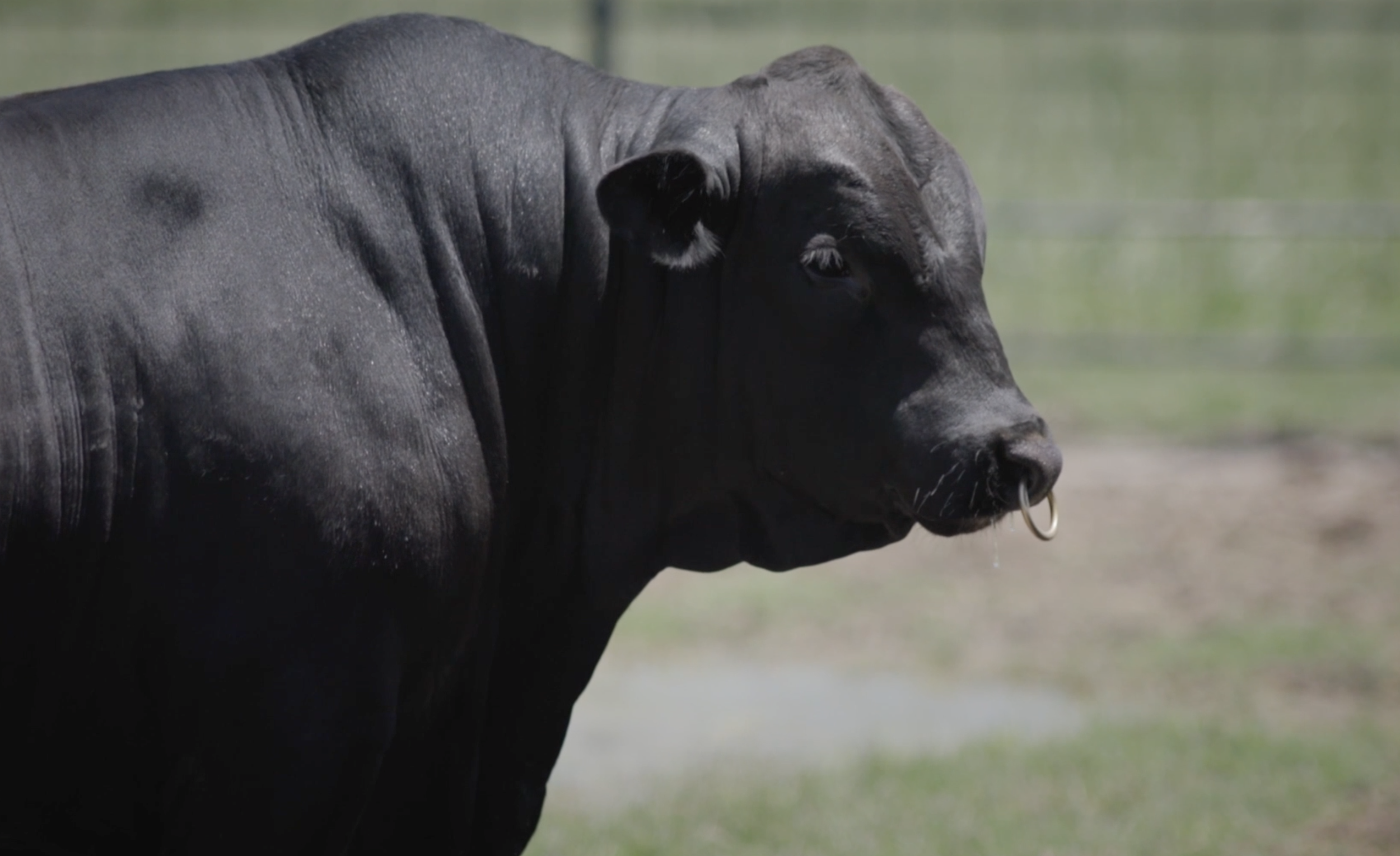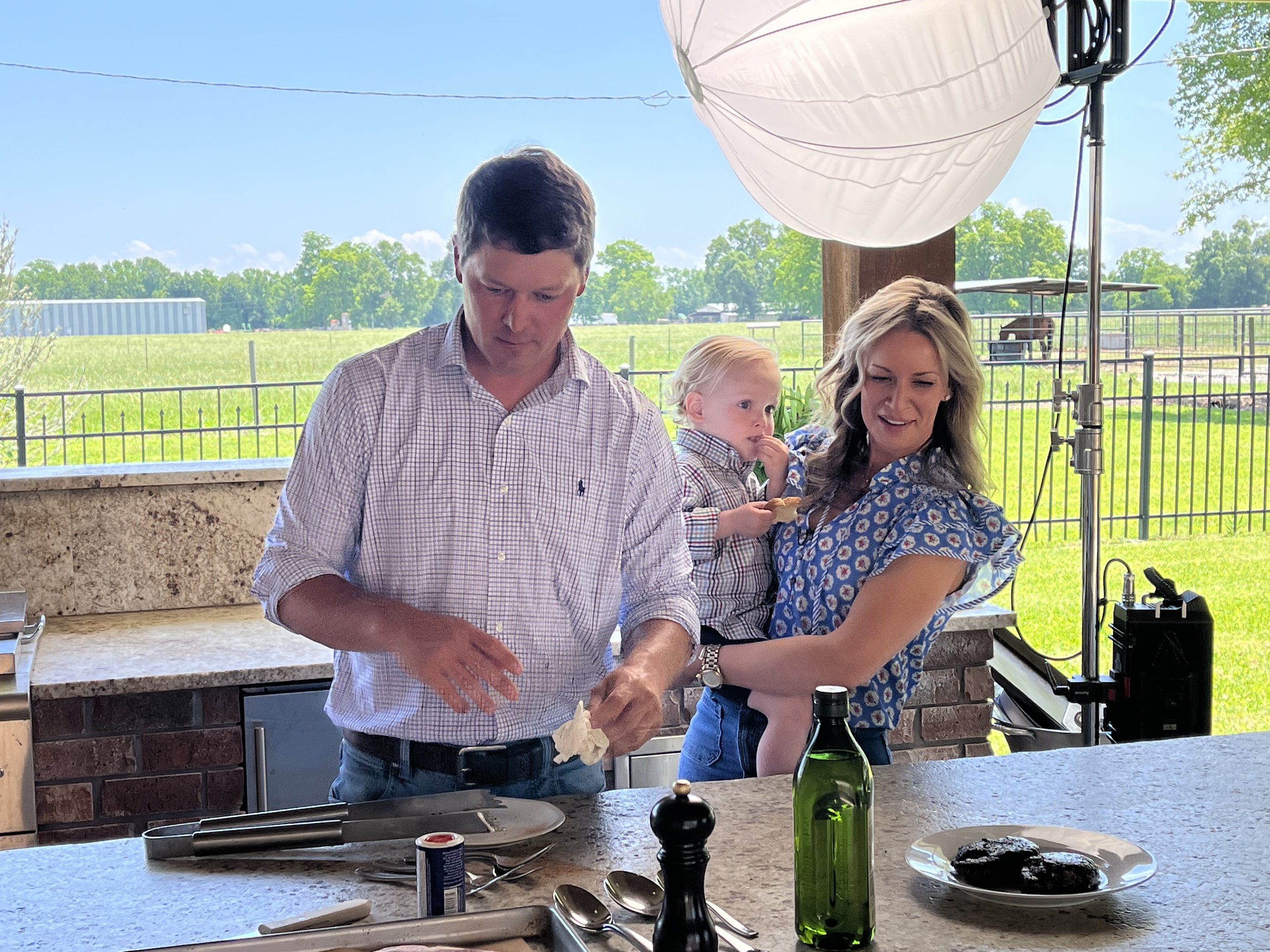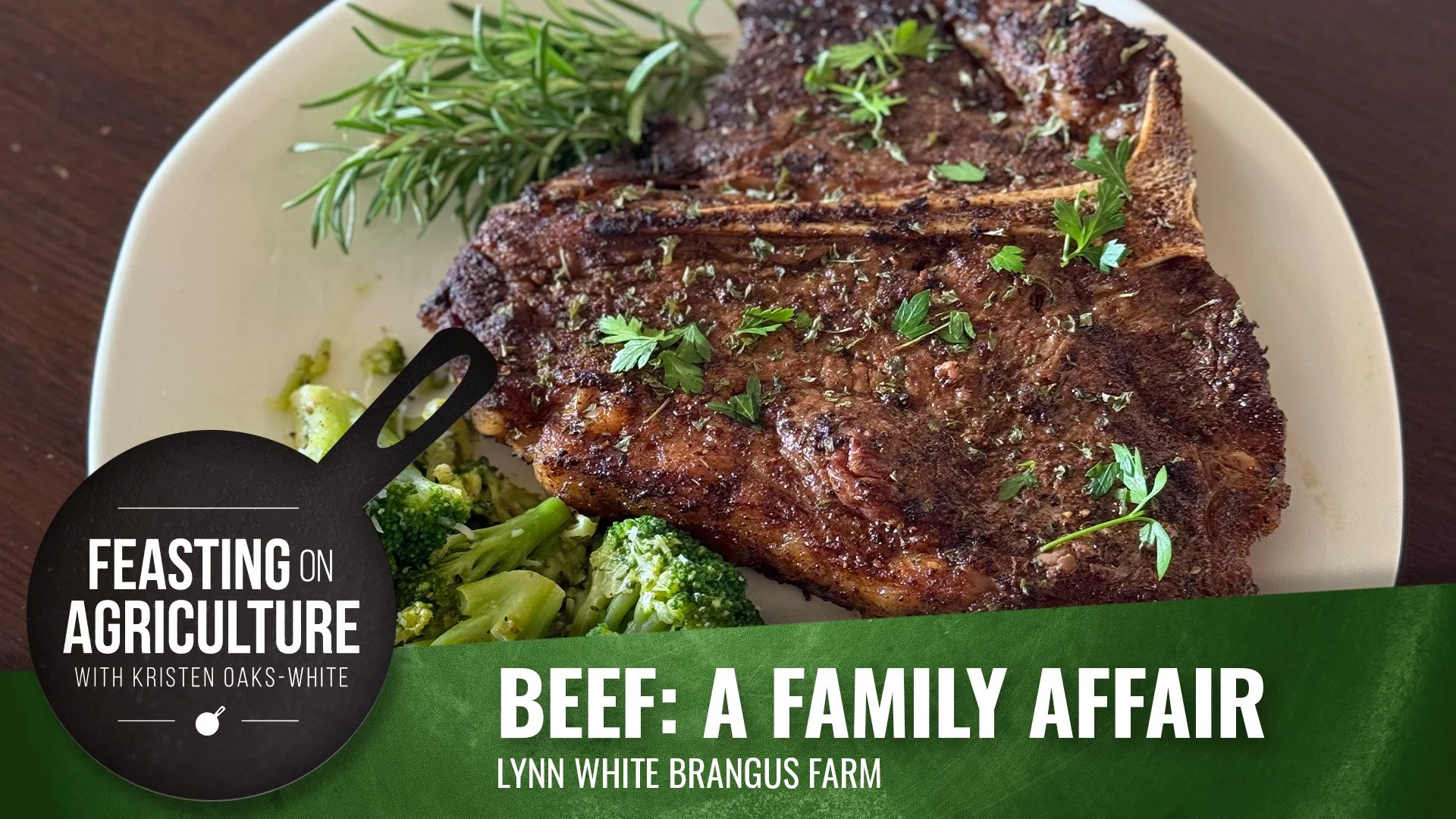Brangus, Butter Baths, and Beef with a Side of Sass: A Family Affair on the Farm
Welcome to Monterey, Louisiana — where the grass is green, the cows are black, and the family is very serious about beef.
On this episode of Feasting on Agriculture, I visited a place I know almost too well: my father-in-law Lynn White’s farm, where beef isn’t just a product — it’s a purpose.
Cattle have always been the tie that binds our family. My husband, Landon, and I actually met at a cattle show in Delhi, Louisiana, when we were just kids. And these same cattle are still a point of... lively discussion in our marriage.
You see, I was raised in an Angus herd. The Whites, on the other hand, are devoted Brangus breeders — firm believers in the cross between Angus and Brahman. In fairness, the Brangus breed is still majority Angus (5/8 to be exact), but I’ve always clung to my roots with the teasing refrain: “Why dilute a great thing?”
It’s less a dispute and more of a running joke — one I like to toss around with Lynn. As you’ll see in the first part of the segment, he’s never short on comebacks. And that’s part of the fun.
Lynn White is a calm, cool cattleman with decades of experience and an unwavering passion for building better beef. And when he talks Brangus, he doesn’t just talk breed — he talks strategy.
Brangus: Built for the South
When you hear “Brangus,” think of it as the best of both worlds: the rich, marbled tenderness of Angus, paired with the heat-hardy resilience of Brahman.
It’s a breed born from necessity, especially in climates like ours in the Deep South. Brangus cattle — 3/8 Brahman, 5/8 Angus — are tailor-made for our climate. That little bit of Brahman “ear,” as Lynn calls it, makes all the difference. It equips them to withstand Louisiana’s simmering humidity, resist parasites, and stay calm under stress. In this climate, survival isn’t enough. Thriving is the goal.
And thrive they do. These cattle don’t just endure the heat — they transform it into muscle, flavor, and exceptional meat quality. Their genetic profile delivers impressive intramuscular fat, also known as marbling — the magic that makes a steak melt on the tongue.
The Science Behind the Sizzle
Lynn doesn’t just raise cattle — he engineers them.
Each animal is selected with intention, bred for traits like ribeye area, intramuscular fat (IMF), and maternal ability. These aren’t buzzwords. They’re measurable, science-backed indicators of how a steer performs both in the pasture and on the plate.
But it starts long before the steak hits the skillet. Superior genetics mean:
Improved growth efficiency (more beef, less feed),
Superior tenderness (thanks to muscle fiber composition),
Reliable marbling (the holy grail of flavor and juiciness).
But genetics alone aren’t the whole story. Handling matters. A calm cow is a better cow — not just ethically, but biologically.
Stress raises cortisol. Cortisol tightens muscle fibers, drains glycogen, and throws off the post-mortem pH balance — which can result in dark, dry, or tough meat. That’s why Lynn and his family breed for temperament just as much as for muscling. Their philosophy?
“Easy handling. Safe handling. We’ve worked on that for a long time.”
Kitchen-Tested, Family-Approved
Of course, even the best genetics can’t rescue a steak from bad cooking. That’s where Landon comes in — my husband, Lynn’s son, and a reluctant on-camera chef.
My dear husband, who usually avoids cooking for people with the same intensity most folks avoid tax audits, finally agreed to help me out with this segment. Honestly, it took some gentle spousal persuasion (read: guilt trip), but the man delivered.
He’s a minimalist in the kitchen: salt, pepper, butter — and that’s it. The beef does the rest.
He knows when to rest the meat (before and after cooking), how to handle heat, and how to trust his instincts. He lets the steaks rest before and after, allowing the muscle fibers to relax and redistribute the juices. The crust? That’s cracked pepper and a hot pan, locked in by patience.
No fancy gadgets. No meat thermometers. Just experience and respect for the animal that got us here.
As we sat down to eat — a buttery Brangus T-Bone, seared to perfection, flanked by sides and smiles — I realized this wasn’t just a meal. It was the culmination of decades of care, bloodlines chosen with intention, and cattle raised with dignity.
Each bite was proof that science and soul can coexist — in the field, in the barn, and on the plate.
Maybe that’s the real magic of Brangus beef. It’s rugged enough to weather Louisiana summers, tender enough to cut with a fork, and flavorful enough to win over even the pickiest toddler — ours gave it his seal of approval between bites.
This is beef with a backstory. And I hope you’ll taste it for yourself!













